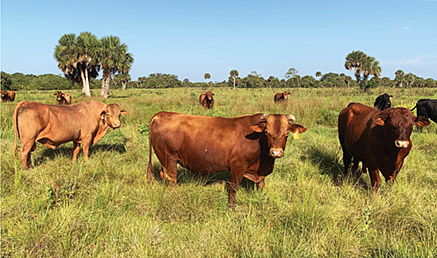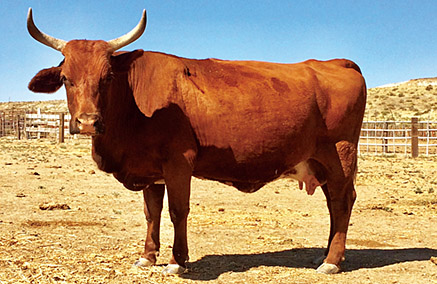

From the Fall 2019 issue of the Isa Informer
By Lorenzo Lasater, President
You have heard me talking about the importance of longevity for years, and it seems commercial beef cattle producers are starting to take notice of this hidden threat. As the US beef herd has transitioned to largely Angus genetics, one of the unanticipated consequences is a dramatic decrease in the herd’s useful productive life.
We are not just talking about how long cattle can live, but how long they can successfully do their job. In the case of a beef cow, that means weaning a merchantable calf each year for as long as possible. Studies have shown that it takes about five calves to cover a cow’s development cost. A cow needs to have calved at two years old, calved every year and reach six years of age to break even. What percentage of your herd attains or exceeds this mark? These demands are compounded by the difficulty in getting them bred the first time and, especially, re-bred for their second calf.
Beyond age, another factor in a cow staying in the herd is her ability to stay healthy. She must be resistant to threats such as structural soundness, insects, disease, eye problems, bad udders and temperature extremes. Beefmasters are legendary for their hardiness and withstanding these types of threats.
 Sixteen-year-old L Bar 3951 is the oldest cow in our fall-calving herd and raising this terrific heifer calf—her 15th.
Sixteen-year-old L Bar 3951 is the oldest cow in our fall-calving herd and raising this terrific heifer calf—her 15th.How does longevity impact a cattle operation? Obviously, increased longevity reduces replacement development costs as well as depreciation. Additionally, the cows in the middle of their productive lives produce pounds of calf at higher levels than their younger herd mates.
We can apply the same longevity logic to bulls. We all know bull replacement costs are significant. If we can stretch their productive lives an extra year or two, we will dramatically impact the bottom line.The photo to the right shows Isa Beefmasters bulls just out of heavy service in south Florida. The yellow bull to the left is 12 years old. The manager of the ranch said they were getting 30–40% more useful life out of their Isa Beefmasters bulls than other breeds.
 These L Bar bulls are just out of heavy service in south Florida. The yellow bull (left) is 12 years old. Our customer calls him “Moneymaker.”
These L Bar bulls are just out of heavy service in south Florida. The yellow bull (left) is 12 years old. Our customer calls him “Moneymaker.”On a recent circle through Nevada, I came across this great old Beefmaster cow, pictured at right. The ranch had switched to black bulls a number of years back. I asked the rancher about the cow, and he told me she was 16 years old. He said before the change they routinely had Beefmaster-cross cows lasting 12 or more years. Now, with a mostly Angus-influenced herd, he said they were lucky to get six or seven years out of them. Needless to say, they are switching back to Beefmasters!
The L Bar pair, pictured at the top, is the oldest cow in our fall-calving herd. She is 16 years old, and that heifer is her 15th calf. I doubt she will be able to sustain that level of production, but she’s already done her job and then some. That cow is truly a Moneymaker!
If you are looking for genetics that will improve the productive efficiency of your herd, we invite you to try Isa Beefmasters. We have been working for more than 80 years to develop efficient, profitable cattle, and now you can reap the rewards of our efforts.
 Pregnant 16-year-old NV Beefmaster cow that has raised 15 calves is definitely a “Moneymaker.”
Pregnant 16-year-old NV Beefmaster cow that has raised 15 calves is definitely a “Moneymaker.”© ISA BEEFMASTERS 1996-2023 ALL RIGHTS RESERVED.